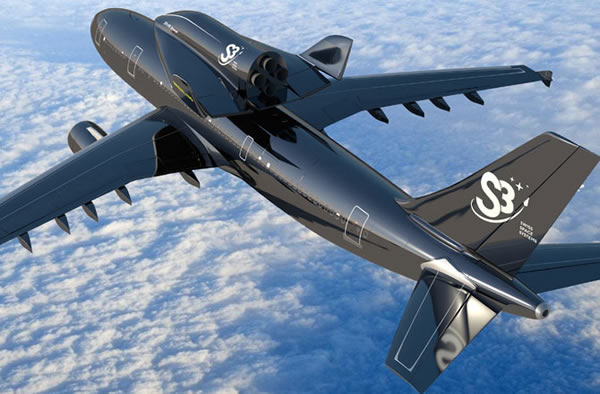Swiss Spaceplane Set to SOAR
In the wake of the Space Shuttle’s demise, new spacecraft are being developed in droves. While all existing craft are space capsules, not unlike those used back in the Apollo era, several of the next generation of spacecraft may be spaceplanes. One contender is being built in Switzerland, with the first prototype to be completed next year.
The SOAR spaceplane is being developed by Swiss Space Systems, or S3 for short, a new company that intends to put Swiss technology on the orbital map. Founded just one year ago, they have ambitions almost as lofty as the heights they intend their spacecraft to reach.
S3 plan to build a mockup SOAR craft next year and, if everything goes according to plan, they aim to open a spaceport at their base in Payern Airport, West Switzerland, by 2015. Test launches of small satellites weighing up to 250 kilograms (550 lb) are currently scheduled to start around the end of 2017.
A “spaceplane” is any craft that is able to glide back to the ground after re-entering Earth’s atmosphere, landing as traditional aircraft instead of needing to be retrieved after parachuting to the surface. NASA’s Space Shuttle orbiter was the world’s first spaceplane, and ever since it was first flown, aerospace engineers from the private sector have been trying to design new and improved spaceplanes. From suborbital craft like the XCOR Lynx rocket plane, to sleek orbital designs like Reaction Engines’ Skylon, several spaceplanes are currently being developed.
Admittedly, SOAR, with it’s maximum altitude of around 80 km (about 50 miles), is a purely suborbital craft rather than a true spacecraft, and might be more correctly called a rocket plane (like the aforementioned Lynx). It won’t have orbital capability and will certainly never be able to dock with the International Space Station. Nonetheless, 80 km is still high enough to launch small satellites to an altitude of up to 700 km (435 miles) — a higher orbit than the Hubble Space Telescope.
Swiss Spaceplane Set to SOAR
In the same way as other spaceplanes being developed, SOAR is intended to cut the costs of transporting goods into orbit by being fully reusable, avoiding expensive and wasteful rockets. To quote directly from the S3 website:
“We propose a sustainable system based and built on aeronautics experience and its developments. For instance, we will launch our spaceplane from a Zero-G certified Airbus A300, and the spaceplane will use standard fuels, with no fuel required during landing after a suborbital flight.”
Launching from an aircraft, the same concept used by Virgin Galactic‘s SpaceShipTwo, allows a craft to start with a higher initial velocity, and save a lot of weight (and cost) on fuel. Taking off like a regular aircraft also eliminates the need for costly ground-based infrastructure like launch pads. In fact, SOAR is expected to cut the price of launching small satellites to one quarter the current price, with the cost currently estimated to be around $10.5 million dollars.
This intrepid little craft is also designed to be as safe as possible. S3 will be able to terminate a launch at any time during the process, returning the shuttle to the ground. This would, no doubt, be very reassuring for any space tourists who’d like a grandstand view of our planet from above.
S3′s vision is to make space more accessible, allowing satellite launches for countries and institutes who currently can’t afford the high asking price. The neutrality and discretion that the Swiss are famed for has certainly helped their cause. Business partners from Europe and America, both private investors and agencies like ESA, have willingly joined in the enterprise, with other still planning on joining. Among the partners currently announced are Morocco and Malaysia, both of which plan to build spaceports in their own countries.
With the interest they’ve received, S3′s budget of 250 million Swiss Francs (just under US $265 million) is almost entirely covered already. However, there is still a lot of work to do in building, developing, and testing SOAR. Based on the experiences of other budding spaceflight enterprises, there are likely to be a few obstacles for S3 to overcome before SOAR can actually soar.
All the same, for both launching satellites and carrying wealthy passengers on suborbital flights, SOAR is definitely worth keeping an eye on. This is one project that shows a lot of potential!
Apr 5, 2013 12:27 PM ET by Markus Hammonds












